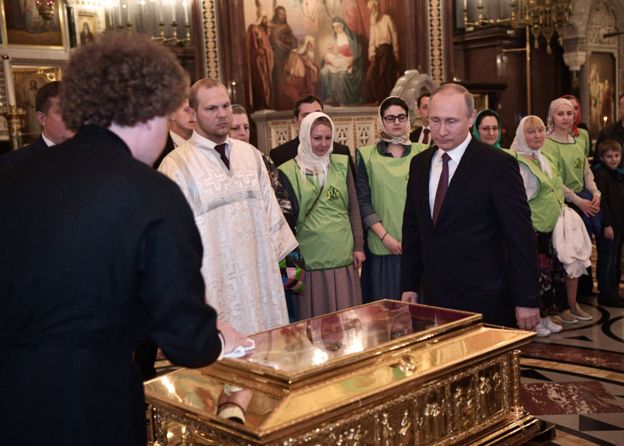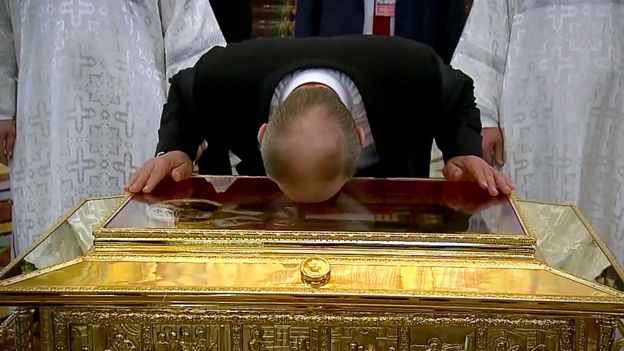Nigel Farage says it is "extremely doubtful" he could be a "person of interest" to the FBI's investigation into Donald Trump and Russia.
The former UKIP leader said he had "no connections" to the country.
The Guardian is reporting that the FBI is interested in his links with individuals connected to Mr Trump and Wikileaks founder Julian Assange.
But it added he had not been accused of wrongdoing and was not a suspect or a target of the probe.
The FBI is carrying out an inquiry into Russia's alleged meddling in the US presidential election and any ties to the Trump campaign.
The Guardian quotes unnamed sources with knowledge of the investigation, who say Mr Farage had come to the attention of investigators because of his links to the Trump campaign and Mr Assange, who had a meeting with Mr Farage in March, at the Ecuadorian embassy in London, where he is living.
'Hysterical'
"One of the things the intelligence investigators have been looking at is points of contact and persons involved," the source is quoted as saying.
In a statement entitled "fake news", Mr Farage said: "In response to the Guardian article, it has taken me a long time to finish reading because I am laughing so much.
"This hysterical attempt to associate me with the Putin regime is a result of the liberal elite being unable to accept Brexit and the election of President Trump.
"For the record I have never been to Russia, I've had no business dealings with Russia in my previous life and I have appeared approximately three times on RT (Russia Today) in the last 18 months.
"I consider it extremely doubtful that I could be a person of interest to the FBI as I have no connections to Russia.
"My meeting with Julian Assange was organised for me by LBC Radio with a view to conducting an interview."
Mr Farage's office said he would be making no further comment on the matter.
Embarrassing messages
The former UKIP leader appeared at a campaign rally with Donald Trump last August, in Mississippi, and was the first British politician to meet him in person after his election victory, at Trump Tower in New York.
The US president - who has hailed Mr Farage for bringing about Brexit - later suggested his friend should become British ambassador to the US, a suggestion that was swiftly rejected by the Foreign Secretary Boris Johnson.
Wikileaks published thousands of hacked Hillary Clinton campaign emails during last year's US election.
US intelligence agencies claim they came from Kremlin-backed hackers, who they say had broken into the email accounts of senior Democrats and released embarrassing messages in order to help Mr Trump defeat Mrs Clinton.
The FBI confirmed in March it was investigating alleged Russian interference in the US presidential election.
The Trump administration maintains there is no evidence of "Trump-Russia collusion". Russia has always denied attempting to influence the US election.



















